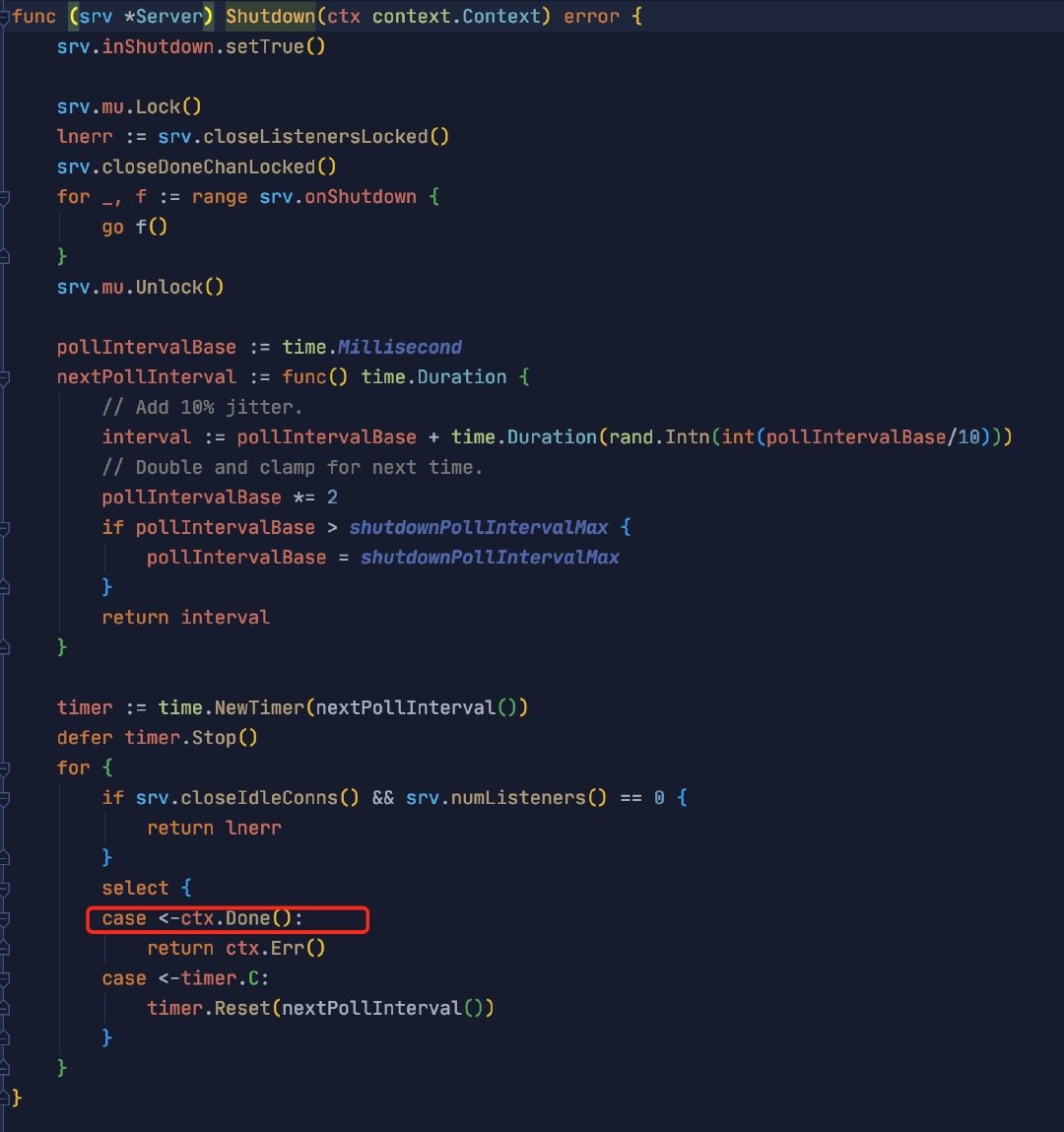前言 日常开发中我们大概率会遇到超时控制的场景,比如一个批量耗时任务、网络请求等;一个良好的超时控制可以有效的避免一些问题(比如 goroutine 泄露、资源不释放等)。
Timer 在 go 中实现超时控制的方法非常简单,首先第一种方案是 Time.After(d Duration):
1 2 3 4 5 func main () 3 * time.Second)
output:
1 2 2021-10-27 23:06:04.304596 +0800 CST m=+0.000085653
time.After() 会返回一个 Channel,该 Channel 会在延时 d 段时间后写入数据。
有了这个特性就可以实现一些异步控制超时的场景:
1 2 3 4 5 6 7 8 9 10 11 12 13 14 15 func main () make (chan struct {}, 1 )go func () "do something..." )4 *time.Second)struct {}{}select {case <-ch:"done" )case <-time.After(3 *time.Second):"timeout" )
这里假设有一个 goroutine 在跑一个耗时任务,利用 select 有一个 channel 获取到数据便退出的特性,当 goroutine 没有在有限时间内完成任务时,主 goroutine 便会退出,也就达到了超时的目的。
output:
timer.After 取消,同时 Channel 发出消息,也可以关闭通道等通知方式。
注意 Channel 最好是有大小,防止阻塞 goroutine ,导致泄露。
Context 第二种方案是利用 context,go 的 context 功能强大;context.WithTimeout() 方法会返回一个具有超时功能的上下文。
1 2 3 4 5 6 7 8 9 10 11 12 13 14 15 ch := make (chan string )3 *time.Second)defer cancel()go func () 4 )"done" select {case res := <-ch:case <-timeout.Done():"timout" , timeout.Err())
同样的用法,context 的 Done() 函数会返回一个 channel,该 channel 会在当前工作完成或者是上下文取消生效。
1 timout context deadline exceeded
通过 timeout.Err() 也能知道当前 context 关闭的原因。
goroutine 传递 context 使用 context 还有一个好处是,可以利用其天然在多个 goroutine 中传递的特性,让所有传递了该 context 的 goroutine 同时接收到取消通知,这点在多 go 中应用非常广泛。
1 2 3 4 5 6 7 8 9 10 11 12 13 14 15 16 17 18 19 20 21 22 23 24 25 26 27 28 29 30 31 32 33 34 35 36 37 38 func main () 12 var num int32 "begin" )3 *time.Second)for i := 0 ; i < total; i++ {go func () 1 )if atomic.LoadInt32(&num) == 10 {for i := 0 ; i < 5 ; i++ {go func () select {case <-ctx.Done():"ctx1 done" , ctx.Err())for i := 0 ; i < 2 ; i++ {go func () select {case <-ctx.Done():"ctx2 done" , ctx.Err())5 )"end" , ctx.Err())"执行完毕 %v" , num)
在以上例子中,无论 goroutine 嵌套了多少层,都是可以在 context 取消时获得消息(当然前提是 context 得传递走)
某些特殊情况需要提前取消 context 时,也可以手动调用 cancelFunc() 函数。
Gin 中的案例 Gin 提供的 Shutdown(ctx) 函数也充分使用了 context。
1 2 3 4 5 6 ctx, cancel := context.WithTimeout(context.Background(), 10 *time.Second)defer cancel()if err := srv.Shutdown(ctx); err != nil {"Server Shutdown:" , err)"Server exiting" )
比如以上代码便是超时等待 10s 进行 Gin 的资源释放,实现的原理也和上文的例子相同。
总结 因为写 go 的时间不长,所以自己写了一个练手的项目:一个接口压力测试工具。
其中一个很常见的需求就是压测 N 秒后退出,这里正好就应用到了相关知识点,同样是初学 go 的小伙伴可以参考。
https://github.com/crossoverJie/ptg/blob/d0781fcb5551281cf6d90a86b70130149e1525a6/duration.go#L41





